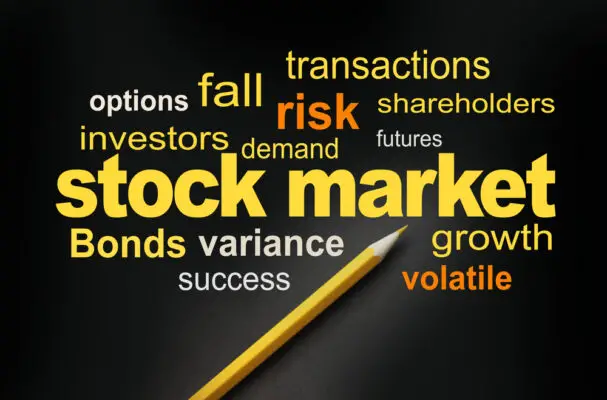Key Risk Indicators (KRIs) serve as vital tools for organizations to gauge and mitigate potential risks in the realm of regulatory compliance.
As regulatory requirements continue to evolve, the ability to effectively monitor and respond to KRIs becomes increasingly critical.
In this comprehensive guide to Key Risk Indicators in regulatory compliance, we will delve into the significance of KRIs, explore relevant examples, and outline best practices for their development and utilization. Whether you are a compliance professional, risk manager, or industry executive, understanding KRIs can empower you to identify and address compliance risks proactively.
Join us as we navigate the landscape of Key Risk Indicators and their pivotal role in fortifying regulatory compliance efforts. For more information, check out Compliance Key Risk Indicators Examples and How to Develop Key Risk Indicators (KRIs) to Fortify Your Business.
Key Risk Indicators (KRIs) play a crucial role in regulatory compliance by providing organizations with valuable insights into potential risks that could impact their operations.
In today’s complex regulatory landscape, organizations must navigate a myriad of compliance requirements.
To effectively manage these risks, understanding and monitoring key risk indicators (KRIs) is essential.
This guide provides a comprehensive overview of KRIs in regulatory compliance, offering insights into their role, importance, and implementation.
Businesses can use Key Risk Indicators (KRIs) to proactively identify and mitigate potential compliance risks, ensuring adherence to regulatory standards and safeguarding their reputation.
Stay ahead of the curve with this indispensable resource for effective risk management in regulatory compliance.

What is Regulatory Compliance?
Regulatory compliance refers to the process of adhering to laws, regulations, and industry standards that apply to a specific organization or industry.
It involves ensuring that the business operations, policies, and practices are in line with the legal requirements set forth by governing bodies.
To manage regulatory compliance, organizations use key risk indicators (KRIs) to identify and monitor potential risks to ensure compliance with necessary regulations.
What are Key Risk Indicators (KRIs)?
The use of key risk indicators (KRIs) is essential in ensuring regulatory compliance.
KRIs are measurable factors that provide insights into potential risks and issues that could impact an organization’s ability to meet regulatory requirements.
Organizations can proactively mitigate compliance risks by monitoring indicators.
KRIs help stakeholders make informed decisions by providing real-time data on the status of compliance efforts.
They allow organizations to track and assess risks over time, enabling them to allocate resources effectively and prioritize compliance activities.
This process helps organizations maintain a high level of regulatory compliance and build trust with customers and regulators.
Understanding Your Risk Appetite
Understanding your risk appetite is crucial in regulatory compliance. It helps assess your risk profile, analyze the risk landscape, and define your operational risks.
By assessing your risk profile, you can identify the level of risk your organization is willing to accept to achieve its objectives.
Analyzing the risk landscape allows you to understand your organization’s potential risks.
Defining your operational risks helps you focus on the specific areas that require attention and mitigation strategies.
Assessing Your Risk Profile
To assess your risk profile in regulatory compliance, it is crucial to have a clear understanding of your risk appetite. Risk appetite refers to the level of risk an organization is willing to take to achieve its objectives.
It is important to align your risk appetite with your risk management strategy and key performance indicators.
Assessing your risk profile involves analyzing the current risk landscape and identifying potential compliance risks. This process helps you identify areas of challenge and warning signs, allowing you to develop effective risk mitigation strategies.
Analyzing the Risk Landscape
Assessing your risk profile involves analyzing the current risk landscape and identifying potential compliance risks while also understanding your organization’s risk appetite.
The risk landscape refers to the overall scope of risks that businesses face, including strategic goals, operational risks, and regulatory risks. Businesses can prioritize risk management efforts by analyzing the risk landscape.
This analysis involves senior management and key employees who are responsible for identifying and assessing risks that could impact the organization’s performance.
Defining Your Operational Risks
To define your operational risks and understand your risk appetite, it is important to analyze the specific areas of your business that are vulnerable to potential risks.
This analysis should consider factors such as your business environment, objectives, internal control, and internal processes.
To help you in this process, here are three key steps to consider:
- Identify and assess your risk exposure: This involves evaluating your business’s potential risks and understanding their potential impact on your operations.
- Establish risk metrics and monitoring mechanisms: Develop a set of risk metrics that can be used to measure and track the identified risks. Implement a system for regular risk monitoring to ensure timely identification and response to any changes in risk levels.
- Engage risk management teams and risk managers: Involve your risk management teams and designated risk managers in the process of defining your operational risks. Their expertise and insights can provide valuable inputs in identifying and managing risks.
Developing a Robust Risk Management Strategy
Developing a robust risk management strategy is essential for organizations to manage and mitigate risks effectively. This involves:
- Establishing strategic goals and objectives.
- Identifying key risks and types of risks.
- Involving senior management in the process.
- Monitoring emerging risk trends and business environment changes.
- Implementing an enterprise-wide risk management program.
Establishing Strategic Goals and Objectives
Strategically, organizations must consistently evaluate and refine their risk management strategy to ensure its effectiveness.
This involves establishing strategic goals and objectives that align with the organization’s overall strategic plan.
To achieve this, the following steps should be taken:
- Identify and categorize risks: Conduct comprehensive risk assessments to identify and categorize risks based on their likelihood and potential impact on the organization.
- Define risk levels and owners: Assign risk levels to prioritize and allocate resources accordingly. Designate risk owners who will be responsible for monitoring and mitigating risks within their respective areas.
- Set risk thresholds and mitigation efforts: Establish risk thresholds that indicate when action needs to be taken. Develop appropriate risk mitigation efforts to minimize the likelihood and impact of identified risks.
Identifying Key Risks and Types of Risks
To develop a robust risk management strategy, organizations must identify key risks that align with their strategic goals and objectives.
This requires considering various factors, such as the potential impact of different types of risk on the organization and its relevant stakeholders.
Organizations should also consider external factors that may affect their operations and compliance efforts. By establishing benchmarks and monitoring warning signals, organizations can proactively identify and address risks before they escalate.
It is important to involve relevant stakeholders in the risk management approach to ensure a comprehensive understanding of potential risks and their implications.
Through effective identification of key risks and types of risk, organizations can build a strong foundation for operational risk management and regulatory compliance.
Involving Senior Management in the Process
It is crucial to involve senior management in the process to ensure a comprehensive and effective risk management strategy, as they provide the necessary guidance and oversight.
Organizations can align their risk management efforts with their organizational goals and regulatory compliance requirements by involving senior management in the risk management process.
Here are three key reasons why involving senior management is essential:
- Setting the risk appetite: Senior management defines the organization’s risk appetite statement. Their involvement ensures that risk-taking is aligned with the organization’s strategic objectives and values.
- Providing guidance and direction: Senior management brings a wealth of knowledge and experience to the risk management process. They can provide valuable insights and guidance on effectively identifying, assessing, and responding to risks.
- Driving effective risk responses: Senior management’s involvement ensures that risk responses are aligned with the organization’s overall risk management initiative. Their support and endorsement of risk mitigation initiatives increase the likelihood of successful implementation and favorable outcomes.
Involving senior management in the risk management process is essential for developing a robust and effective risk management strategy that meets regulatory compliance requirements while aligning with the organization’s goals.

Monitoring Emerging Risk Trends and Business Environment Changes
Senior management plays a crucial role in monitoring emerging risk trends and business environment changes to develop a robust risk management strategy.
Organizations can proactively mitigate potential risks by monitoring emerging trends. This involves staying up-to-date with industry developments, regulatory changes, and market trends that may impact the organization’s operations.
Additionally, monitoring business environment changes helps organizations understand the evolving dynamics and adapt their risk management strategies accordingly. Key risk indicators (KRIs) are essential tools in this process, as they provide early warning signs of potential risks, such as operational, financial, and reputational risks.
Ongoing risk monitoring and maintaining a strong control environment are vital components of an effective risk management strategy, enabling organizations to identify and address emerging risks before they escalate and impact the organization’s objectives and regulatory compliance.
Implementing an Enterprise-Wide Risk Management Program
Implementing an enterprise-wide risk management program is essential for developing a robust risk management strategy that addresses emerging risks and ensures regulatory compliance. To successfully implement such a program, organizations need to take the following actions:
- Define a clear objective and scope: Clearly define the purpose and goals of the risk management program and identify the areas of the organization it will cover.
- Identify critical metrics and potential issues: Determine the key risk indicators and metrics that will be used to monitor risks and identify potential issues. This will help in identifying and prioritizing future risks.
- Develop action plans and corrective actions: Create action plans to mitigate identified risks and outline the necessary corrective actions to be taken in case of any risk event. These plans should be reviewed and updated regularly.
Frequently Asked Questions
How Can Key Risk Indicators Help Organizations in Regulatory Compliance?
Key risk indicators (KRIs) are crucial in helping organizations maintain regulatory compliance. By monitoring and measuring potential risks, KRIs provide valuable insights that enable proactive risk management and ensure compliance with regulatory requirements.
What Are Some Common Challenges in Developing and Implementing Key Risk Indicators?
Developing and implementing key risk indicators in regulatory compliance can present several challenges.
These include determining relevant metrics, establishing effective data collection processes, ensuring consistent reporting, and monitoring and adapting KRI frameworks to changing regulatory requirements.
How Can Organizations Ensure That Their Key Risk Indicators Align With Their Risk Appetite?
Organizations can ensure that their key risk indicators align with their risk appetite by establishing a clear risk appetite framework, conducting regular risk assessments, and involving key stakeholders in the KRI development process. This helps in maintaining effective risk management practices.
What Are Some Best Practices for Monitoring and Reporting Key Risk Indicators?
Best practices for monitoring and reporting key risk indicators include regularly reviewing and updating KRIs, ensuring alignment with organizational goals and risk appetite, using automated data collection and analysis systems, and providing clear and concise reports to relevant stakeholders.
How Can Organizations Effectively Communicate Key Risk Indicators to Stakeholders and Regulators?
Organizations can effectively communicate key risk indicators to stakeholders and regulators by implementing clear and concise reporting mechanisms, utilizing appropriate communication channels, ensuring transparency, and providing regular updates on KRI performance and mitigation strategies.

Conclusion
Effective management of key risk indicators is crucial for regulatory compliance with laws, regulations, and industry standards.
Businesses can proactively identify and mitigate potential risks by developing a robust risk management strategy and aligning it with the organization’s risk appetite.
This enables them to maintain compliance, protect their reputation, and avoid legal and financial consequences.
It is imperative for organizations to prioritize risk management in order to operate ethically and sustainably in today’s complex regulatory landscape.

Chris Ekai is a Risk Management expert with over 10 years of experience in the field. He has a Master’s(MSc) degree in Risk Management from University of Portsmouth and is a CPA and Finance professional. He currently works as a Content Manager at Risk Publishing, writing about Enterprise Risk Management, Business Continuity Management and Project Management.

